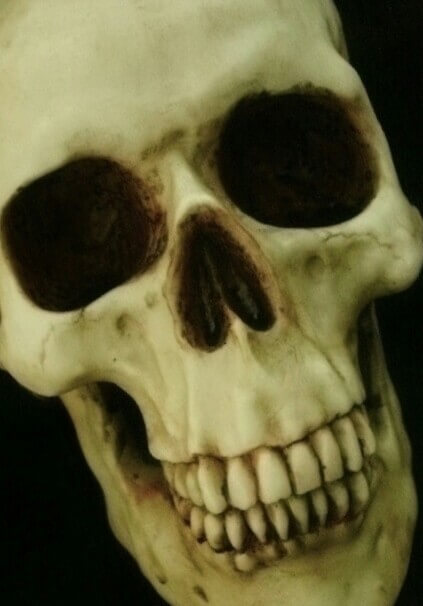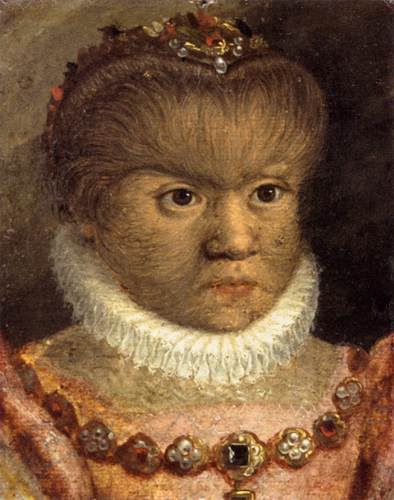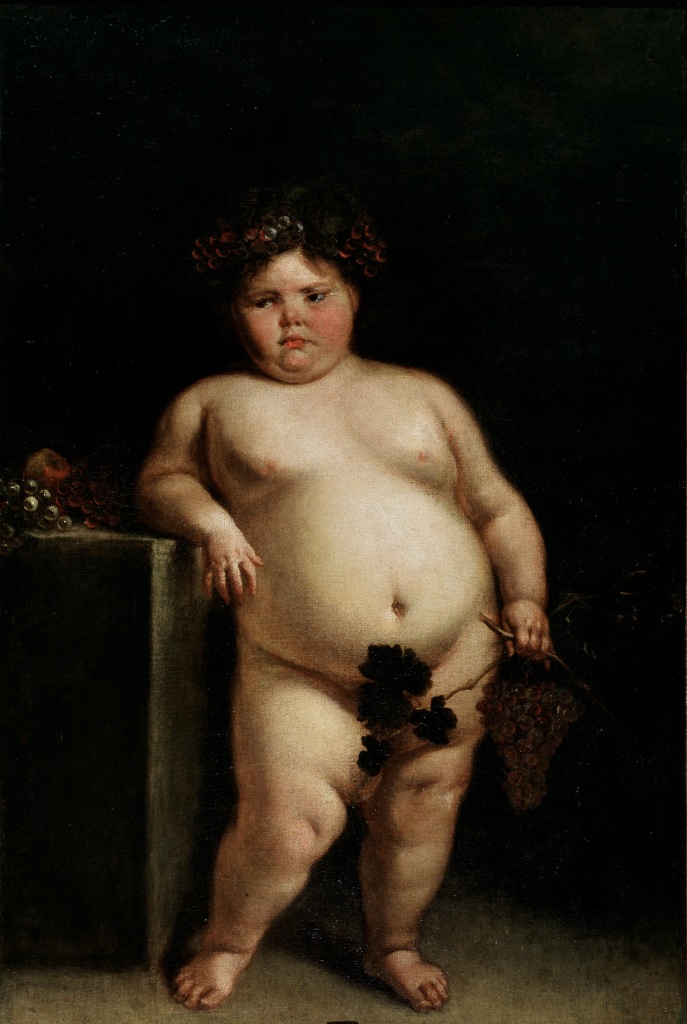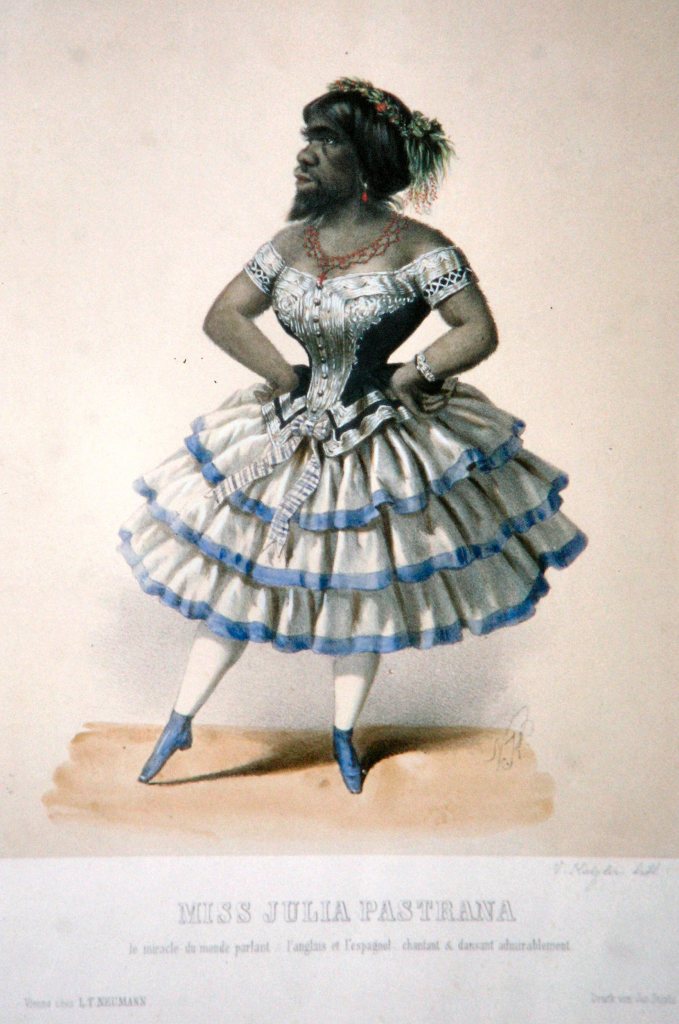So you want to see some bizarre human freaks of nature? Well, you have come to the right place. We have a large list of sideshow freaks who lived a long time ago. Their medical conditions may seem unbelievable. Get ready to see some pictures and footage of human freaks that lived from the times of the 1500’s, to all the way up to the 1900’s.
For centuries, human freaks have sparked the interest of people from around the world. This is an image of an 1890 magazine titled: The Illustrated American.
It talks about several people with severe deformities, as well as successful careers in the sideshow business. This is the time when freak shows were at their height of popularity.
Human Freaks From The 1500’s
Petrus Gonsalvus (born in 1537)

Cases where hair covers a large area of the body has informally been called werewolf syndrome. There are two different types of hypertrichosis. One is called generalized hypertrichosis. This is hair growth occurring over the whole body (with the exception of facial, axillary and the pubic area). The second type is localized hypertrichosis. This is when the hair is restricted to a certain area.
Gonsalvus was married and had children. Unfortunately, some of his children had also dealt with hypertrichosis. Although there is no date for Gonsalvus’ death, his life was well recorded.
These two portraits show his son and daughter with hypertrichosis.
Gregor Baci (sometime in the 1500’s)

After Baci’s unbelievable survival, he had quickly became famous. Above is a 16th century painting of him. It was created by an unknown artist and was first listed in the year 1622. The original portrait is located in the Chamber of Art and Curiosities collection at the Ambras Castle in Austria.
The 1600’s
Barbara van Beck (16 February 1629–1668)
Barbara van Beck was an entrepreneur in the 1600s. She was internationally-known for her cascading beard, which was caused by hypertrichosis. Just like Petrus Gonsalvus and his hairy children, the condition left her with hair growth all over her body.
Fortunately, like other famous freaks from back in the day, van Beck took advantage of her rare condition. For 30 years, she went on tour across Europe, which made her famous and well-off financially.
Death
It is not known when or how van Beck died. Since there were no mentions of her life after 1668, some believe that is the year she passed away.
Some believe Barbara van Beck may have inspired the Star Wars character Chewbacca. Do you see the resemblance?
Magdalena Ventura (sometime in the 1600’s)

Eugenia Martinez Vallejo (1674–1699)

Jesters would often display some form of physical or mental disability. Vallejo had differences that appealed to the rest of the court entourage. The first painting is a portrait of Spain from 1680. The nude painting below depicts her with vine leaves used to cite Bacchus (the Roman god of wine).
The 1700’s
Nicolas Ferry: The Dwarf (1741–1764)
Nicolas Ferry was a French dwarf that had lived from 1741-1764. Due to his employment as a court dwarf of King Stanis?aw I Leszczy?ski (King of Poland), he was famous throughout Europe.
At birth, Ferry was extremely small. Although he kept growing, he grew at a very slow rate. A rate much slower than your average person. At the young age of 5, he reached close to 24 inches tall. In 1746, King Stanislaw had offered Ferry’s parents money in exchange to keep him as a maintained and educated court dwarf. He then became quickly famous and was given the name “Baby”.
Ferry was given tutors to help him get educated, but it is reported that he never learned to read or write. Although he was a spoiled little guy who would behave poorly, he was still loved by Stanislaw. He was also quite entertaining and liked playing practical jokes on visitors of the court.
In 1759, Ferry had some competition for his job as a court dwarf. Even with a Polish dwarf that was smaller in size, had better manners and a much greater intelligence, his employment was still not threatened. He was just too well liked by not only King Stanislaw, but many others as well.
Death
Throughout his entire life, Ferry had stood employed at Stanislaw’s court. He reached a maximum height of just 34 inches. Sadly, his health went down hill in his late teen years as he was hunchback and suffered from premature aging. He also suffered for years with urinary incontinence (UI) and died at the age of 22 on June 8, 1764. Interestingly, researchers were unable to determine what actual condition he suffered with until 2006 and 2008. After carefully studying Ferry’s skeletal remains, French researchers say Ferry suffered from an extremely rare genetic form of primordial dwarfism. The condition is characterized by features of small abnormal teeth that don’t have roots.
The 1800’s
Julia Pastrana (1834 – 25 March 1860)

A doctor by the name of Alexander B. Mott certified that Pastrana was a distinct species from the result of the mating between a human and an orangutan. Of course, this was eventually declared as being incorrect. She was instead declared as a human of Indian descent. Pastrana later became purchased from a woman that was likely her mother. She eventually learned how to dance and play music. She also went on a worldwide tour where she was named “Bearded and Hair Lady”.
Death
Pastrana was a smart woman who had learned to read and write in three different languages. She later married and became pregnant with a baby that had features similar to hers. Unfortunately, her baby had passed away three days after birth. Pastrana died from postpartum complications just five days later.
For Pastrana’s time, she was perhaps one of the most famous curiosities.
A Woman With Severe Hypertrophy (sometime in the mid 1800’s)

At age 42, Lu-shi went to the hospital to treat her condition. She was given measurements of both breasts. In 1849, her left breast was measured at 2 feet, 2 1/2 inches in circumference. It weighed approximately 6 pounds and was surgically removed. Just one month after her left breast was removed, the right was removed. It measured two feet and weighed 5 1/2 pounds. It took just 3 minutes to remove each breast. Fortunately, she was able to get the extra weight off her chest.
Blanche Dumas (born in 1860)
In 1860, Blanche Dumas was born on the island of Martinique. A modified duplication of her lower body is what made her such a popular human curiosity. Dumas had two underdeveloped legs, a third leg attached to her coccygeus, a duplicate bladder and a duplicate bowel. She also had two fully functional vaginas and two well-developed vulvas.
4 Breasts
If you read various articles on the story of Blanche Dumas, you won’t forget the claim that she also lived with two extra rudimentary breasts (with nipples) above the pubic region. It is believed that the two extra breasts were just a stump of another leg with added artificial nipples. Promoters likely created fake breasts to give Dumas an even more bizarre set of abnormalities.
At the age of 25, Dumas was added to the pages of an encyclopedic collection with rare and extraordinary cases called Anomalies and Curiosities of Medicine.
A Woman With Two Vaginas Meets A Man With Two Penises
There are unsubstantiated claims from various sources that Dumas had relations with a man who had three legs and two functional penises. Juan Baptista dos Santos was on a European tour in Paris when Dumas was said to have shared interest in having sex with him.
To read more about this unusual story, visit our post titled Blanche Dumas: Two Vaginas & A High Sex Drive.
The Large Albino Family (lived sometime in the mid to late 1800’s)

The albino family had performed in Barnum’s shows and the Lemon Bros for about 40 years. Rudolph had performed as an albino violinist and had later passed away in the year 1909.
Albinos get their visual abnormalities from a hereditary inability to produce the dark pigment known as melanin (dark brown to black pigment). The condition is congenital and affects people of all ethnic backgrounds. However, overall it is most commonly seen in people of Sub-Saharan African descent. Worldwide, approximately one in every 17,000 people have albinism.
Below is an interesting video about the world’s largest albino family. All eight of them have albinism.
The World’s Largest Albino Family Today
Late 1800’s-1900’s
Joseph Merrick (5 August 1862 – 11 April 1890)
Perhaps one of the most well-known sideshow freaks of all time is Joseph Merrick. Experts believe he lived with a tumor disorder called neurofibromatosis type 1 (NF1). In addition to NF1, Merrick was also believed to have suffered from a congenital disorder called Proteus syndrome, which causes skin overgrowth and unusual bone development.
Merrick spent part of his life as a curiosity in circus sideshows. His unusual appearance earned him the name the Elephant Man. Promoters advertised him as “Half-a-Man and Half-an-Elephant.”
Death
John Merrick died on April 11, 1890 at the age of 27. Though sources say the cause of his dead was suffocation, surgeon Frederick Treves claimed Merrick’s death was caused by a dislocated neck. The claim was made because due to the massive size of his head, he was advised to sleep sitting up. Instead, he slept normally, which is likely what caused his death.
Myrtle Corbin (May 12, 1868 – May 30, 1928)

Corbin was able to get employment doing sideshow performances. She was given the name “Four-Legged Girl from Texas” at the age of 13. She became so popular that soon after she had decided to retire from her field, there were fake four-legged women that performed at sideshows. At the young age of 19, Corbin had gotten married. She later gave birth to four daughters and one son.
Laloo the Hindoo (1874–1905)
Laloo the Hindoo was a sideshow freak born in 1874. He was dubbed the “Handsome, Healthy, Happy Hindoo,” and was a popular attraction in America
What Made Laloo So Popular?
Laloo was born with his parasitic twin brother attached to his breastbone. He was a headless boy born with two arms, two legs, and a penis that was functional. Though he had no testicles, he did have a complete urinary system, which included the capability of maintaining an erection and occasional urination. Fortunately, he was incapable of defecating. Since Laloo could not prevent his brother from urinating, he figured the best thing to do was to put a diaper on him.
For entertainment purposes, Laloo wanted to convince his fans to believe his twin brother was actually a girl. Therefore, he would often dress him up in female clothing. Due to his brother’s occasional and uncontrolled erections the act eventually failed.
Laloo The Rights Activist
In 1889, Laloo participated in a protest with the intentions of referring to sideshow performers as “prodigies” and not “freaks.” Thanks to his efforts and other activists, the word “freak” had fell out of common practice for long time.
Death
In 1905, while Laloo was performing for the Norris and Rowe circus in Mexico, he was killed in a train wreck.
Pasqual Piñón (1889–1929)
Piñón was a railroad worker from Texas. In the early 1900’s, a large tumor at the top of his head caught the attention of a sideshow promoter. He went on to become a performer at the Sells Floto Circus in the United States.
While Piñón’s actual condition was nothing more than a tumor or cyst, his fans knew him as “The Two-Headed Mexican.” To make it look like he had two heads, onto the growth was a fake face made out of wax. According to some reports, his extra head was made of silver and surgically placed under the skin. He went on to tour in the sideshow business for several years.
Thanks to Piñón’s circus manager, he had the growth removed. He returned to Texas as an average man with one head.
Frank Lentinim (May 18, 1889 − September 21, 1966)

Lentini had a twin that was attached to his body at the base of his spine. The twin had a pelvis bone, set of male genitalia, full-sized leg and a small clubbed foot attached to Lentini’s extra knee. Both sets of sexual organs were functional. At the age of six, his two normal legs had different lengths. One leg was 39 inches and the other was 38. The third leg was even shorter at 36 inches.
At the young age of eight, Lentini moved to the United States for employment in the sideshow business. Even though he had an abnormality that made him very unique to others, he was well-respected by his peers. In fact, they would often call him “The King”. Lentini earned the show name the Three-Legged Football Player after using his third leg to kick a football across the stage.
Lentini’s career was an absolute success. He worked in the sideshow business for over forty years. He had contributed to all of the major circus and sideshows such as Buffalo Bill’s Wild West Show and Barnum and Bailey. Regardless of his extremely abnormal condition, he still married and had four kids. However, this raises a good question. Since Lentini had two separate penises that were fully functional, does this mean that some or all of his children are biologically from his twin? Even today, we would not know the answer. This is because identical twins share the same DNA.
Schlitzie The Pinhead (September 10, 1901 – September 24, 1971)
Schlitzie The Pinhead was a famous American sideshow performer. He was born with a medical condition called microcephaly. The disorder prevents the brain from developing properly, resulting in a head that is smaller than normal.
Schlitzie had an extremely successful career working in upscale circuses throughout the 1920s and 1930s. He was also an actor who was featured in films about human freaks. Schlitzie made his first appearance in a 1928 silent dram film titled The Sideshow. It featured real sideshow freaks at a carnival. He was best known for his role in the 1932 horror film Freaks.
Decades after his work in popular circuses and freak show films, Schlitzie was still performing in various sideshow circuits both locally and internationally. His final major appearance occurred at the 1968 Dobritch International Circus at the Los Angeles Sports Arena.
Death
Schlitzie died on September 24, 1971. The cause of his death is unknown.
Freaks: The 1932 Horror Film Trailer
Final Words
Thank you for reading our comprehensive list of human freaks of nature from the last five centuries. Although not all of them performed in sideshows, they were all unique people with rare abnormalities. They are a part of history people will be learning about as long as humans exist.
Out of our entire list, do you have one that sparks your interest more than the rest? Maybe they had a condition you never heard of. Feel free to share more freaks not mentioned in this post.

















